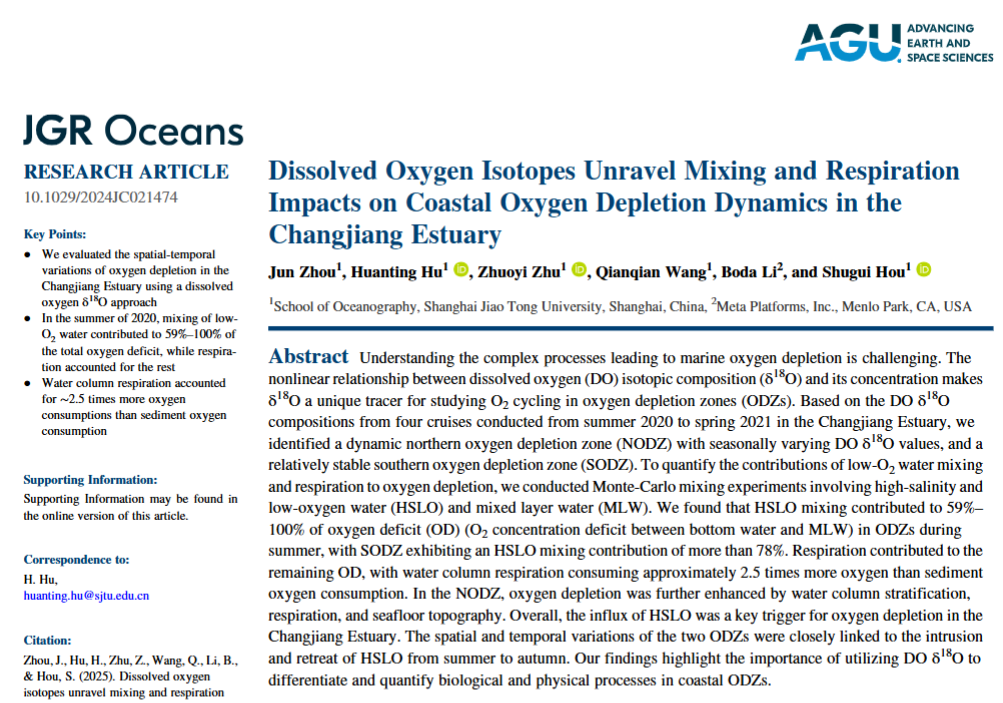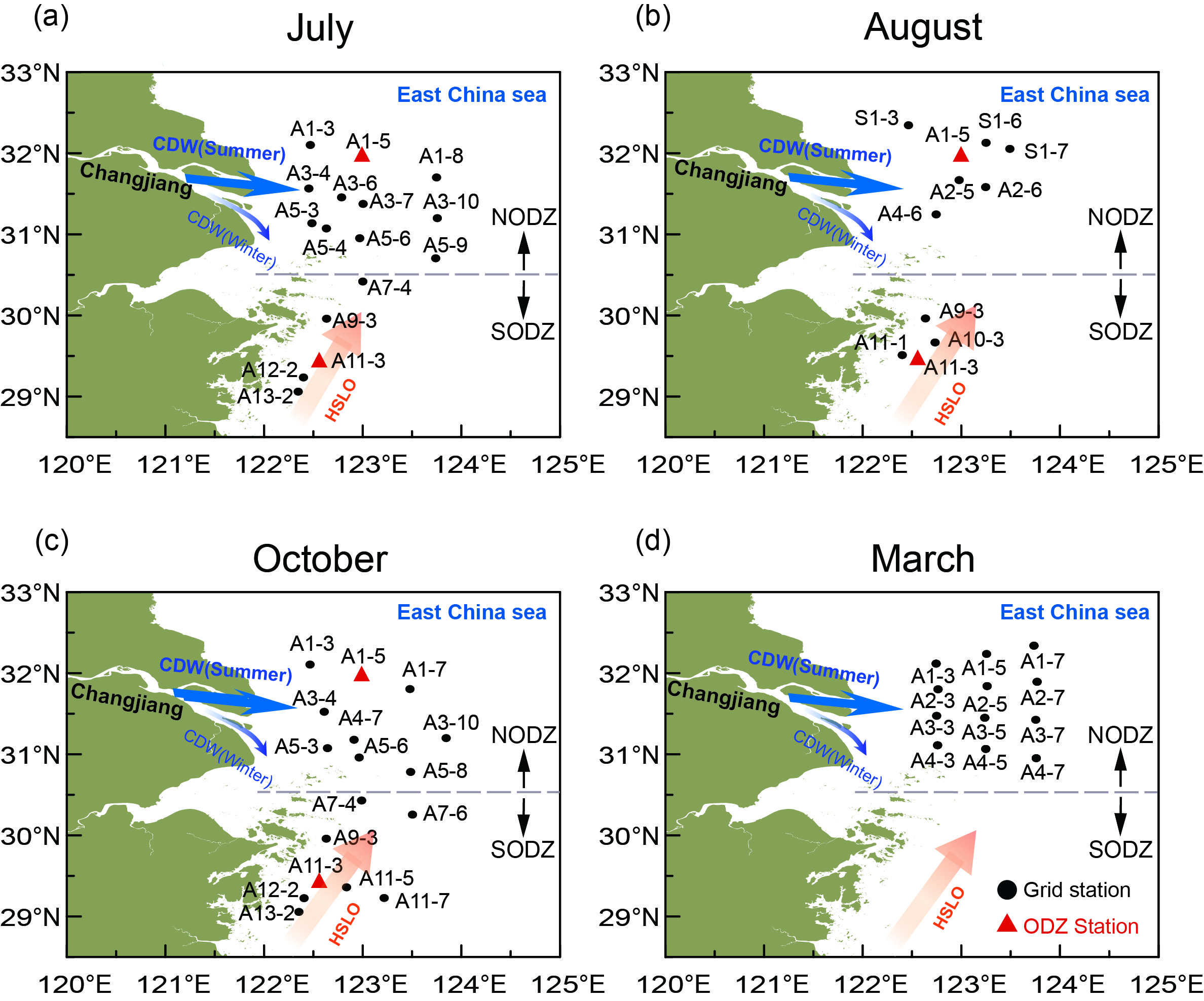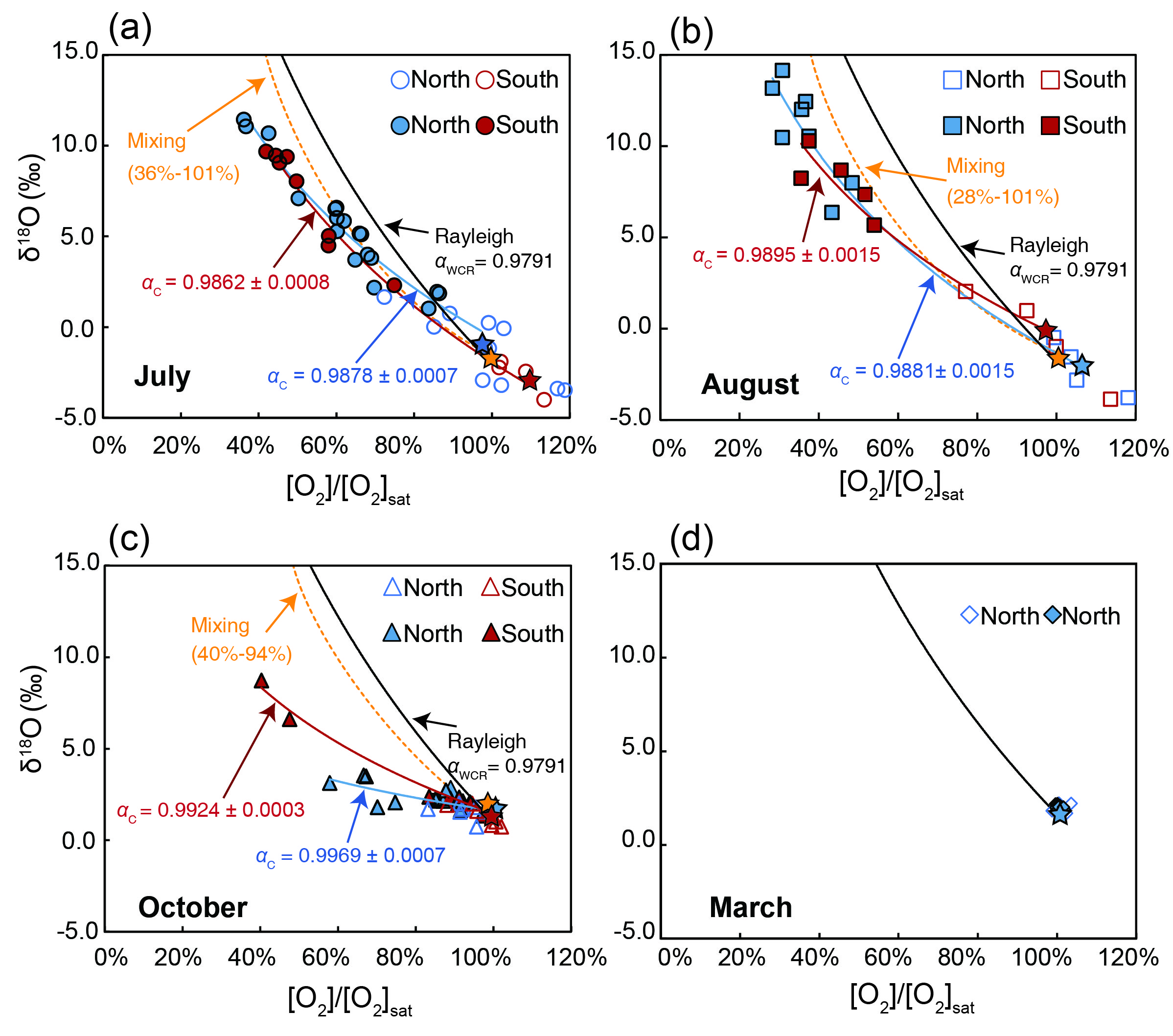Jun Zhou, a Ph.D. student from the School of Oceanography at Shanghai Jiao Tong University, recently published a research paper in JGR: Oceans titled “Dissolved oxygen isotopes unravel mixing and respiration impacts on coastal oxygen depletion dynamics in the Changjiang Estuary.” This study uses dissolved oxygen (DO) and its isotopes (δ18O) in seawater to clarify the dynamic spatial-temporal changes of two oxygen depletion zones (ODZs) in the Changjiang Estuary, quantifying the relative contributions of mixing and respiration to oxygen depletion. It provides a new research perspective and key scientific evidence for hypoxia prevention and control.

In recent decades, seasonal hypoxia events have occurred frequently in Changjiang Estuary and its adjacent sea. Distinguishing and quantifying the relative contributions of different oxygen consumption mechanisms to oxygen deficits is the key to studying the hypoxia. Various biochemical processes—such as water column respiration (WCR) and sediment oxygen consumption (SOC)—as well as physical mixing, impart distinct isotopic signatures to DO. Therefore, DO isotopes can be a good tracer for distinguishing and quantifying the different mechanisms driving hypoxia. The research team collected in-situ seawater at multiple depths in Changjiang Estuary during July, August, October 2020 and March 2021 respectively. Using a combination of DO concentrations ([O2]) and δ18O, along with the Monte Carlo mixing model—based on the isotopic signatures of high-oxygen and low-oxygen (HSLO) water masses, this study quantifies the contributions of HSLO water mixing, as well as respiration in both the WCR and SOC, to reveal the seasonal and spatial variability of oxygen depletion in the Changjiang Estuary.

Figure 1. Sampling stations in Changjiang Estuary during July (a), August (b), October (c), 2020 and March (d), 2021.

Figure 2. Spatial-temporal variations in the αc for the two Oxygen depletion zones.
The research results indicate that the δ18O and [O2] in Changjiang estuary exhibit opposite trends, which are the result of the combined effects of the respiration and low-O2 water mixing. Significant differences in the isotopic fractionation patterns of dissolved oxygen were observed between the northern oxygen depletion zone (NODZ) and southern oxygen depletion zone (SODZ). The community oxygen consumption isotopic fractionation factor (αc) in NODZ shows pronounced seasonal fluctuations, gradually increasing from July to October, while the αc values in SODZ exhibit smaller changes and no significant seasonal differences (p > 0.05). The lower αc values in July and August suggest a greater contribution of WCR to oxygen deficit particularly in NODZ. The lowest oxygen saturation ([O2]/[O2]sat) and the highest δ18O values were observed in the NODZ, indicating that the degree of hypoxia in NODZ higher than that in SODZ. However, by October, hypoxia in NODZ subsided, while the SODZ persisted for a longer duration. Both [O2] and δ18O in the NODZ also displayed clear seasonal changes, whereas the SODZ remained relatively stable during the observation period. This reveals the oxygen consumption mechanisms in the two ODZs are different, likely regulated by the varying contributions of mixing and respiration. The seasonal variations may be associated with the intrusion and retreat of HSLO

Figure 3. The comparison of the observed [O2] ([O2]obs) and dissolved oxygen δ18O values (δ18Oobs) beneath the mixed layer in July (a, b), August (c, d), and October (e, f) with the mixed [O2] ([O2]mix) and dissolved oxygen δ18O values (δ18Omix) obtained from the Monte Carlo mixing experiment. The black solid line in the figure represents the 1:1 ratio of [O2]obs-[O2]mix and δ18Oobs-δ18Omix. The data points of the hypoxia stations are marked with black peripheral lines.
To quantify the contribution of HSLO mixing and respiration to oxygen deficit, the research team conducted Monte-Carlo mixing experiments between HSLO and high-oxygen mixed layer water (MLW). The experimental results show that all the hypoxia stations are close to or higher than the 1:1 line in the δ18Oobs-δ18Omix figure, indicating that HSLO mixing provides a background with a low [O2] for the Changjiang Estuary. Meanwhile, the subsequent in-situ respiratory consumption continues to reduce the [O2], eventually causing hypoxia. Based on the model, this study quantified that the contribution to oxygen deficit of HSLO was 59% to 100%, among which the contribution of HSLO mixing in SODZ exceeded 78%. The remaining oxygen consumption is contributed by respiration. Among them, the proportion of respiration in NODZ is 6-41%, and that in SODZ is 0-22%. From July to August, when hypoxia was at its peak, the contribution of respiration in the NODZ did not increase significantly, but the areal extent of hypoxia expanded markedly. This study also quantify the contribution of WCR and SOC, and the results show the oxygen consumed by WCR was approximately 2.5 times that consumed by SOC.
Jun Zhou, a Ph.D. student, the first author of the paper, Associate Researcher Huanting Hu from the School of Oceanography is the corresponding author. Co-authors include Researcher Zhuoyi Zhu and Professor Shugui Hou from the School of Oceanography of Shanghai Jiao Tong University, Master's graduate Qianqian Wang, and Doctor Boda Li. The School of Oceanography at Shanghai Jiao Tong University serves as both the first and corresponding institution. This work was supported by the National Natural Science Foundation of China (42106229), the Oceanic Interdisciplinary Program of Shanghai Jiao Tong University (SL2021PT105, SL2023MS019), and the Shanghai Frontiers Science Center of Polar Science (SCOPS).
Paper Link:
https://doi.org/10.1029/2024JC021474
